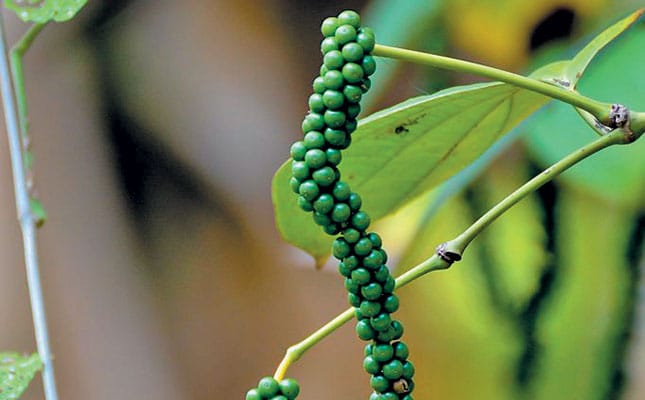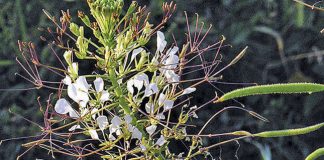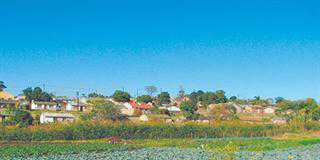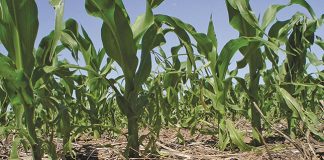
Black pepper is the cooked and dried unripe fruit of the Piper negrum plant. White pepper is the ripe fruit seeds. A flowering vine, the pepper plant attaches itself to trees or trellises by means of aerial roots. Its root system will penetrate to a depth of 2m.
The plant has three types of branches (runners):
- The main or primary runner forms the permanent stem from which other runners develop.
- The secondary runners are round, long shoots. They climb to a considerable height and later droop downwards.
- Tertiary runners are short, sturdier branches that spread horizontally from the primary and secondary runners.
- The fruit is a round berry, 4mm to 10mm in diameter, borne in oblong clusters. Each berry has one spherical seed of 3mm to 6mm in diameter, surrounded by the fruit flesh.
Requirements
Pepper cannot tolerate frost and will not grow where the temperature drops below 12°C. A plant needs about 2 000mm of rain annually. In South Africa, irrigation typically supplements rainfall.
The soil must have a good structure and water-holding capacity, and be well drained to prevent root rot. The red dolerite soils of KwaZulu-Natal and the red andesite soils of the Soutpansberg are ideal for growing pepper.
Propagation
Take one-leaf or two-leaf cuttings from secondary runners in September. Root them in mist beds and transplant them into the land after nine months. Space rows 3m apart and plants 2m apart on the row. This will give you a density of 1 666 plants/ha.
As pepper is a climbing vine, provide supports. Use treated poles, as the expected lifetime of a plant is 20 years.
Fertilisation
Pepper plants respond very well to organic fertiliser. For example, apply kraal manure
at about 5kg/plant/year. Where the soil pH is slightly high (6,5), use ammonium sulphate as nitrogen source at about 600g/mature plant annually at 100g per application.
Plants respond well to nitrogen in soil only when there is a high potassium level as well.
Apply magnesium as magnesium sulphate at about 750g/plant.
If the soil is too acidic, apply 500g to 1 000g dolomitic lime to every plant every second year. A general pepper fertilisation guideline is 450g potassium chloride, divided into two or three applications.
Mulching
Mulch is highly beneficial for keeping the soil moist, dramatically reducing temperature fluctuation between day and night.
Irrigation
Overhead irrigation is preferred to flood irrigation. The most effective irrigation system is a permanent plastic microjet system to supplement rainfall up to about 2 000mm/year.
Source: Fact sheet compiled by the department of agriculture in co-operation with the ARC-Institute for Tropical and Subtropical Crops.













